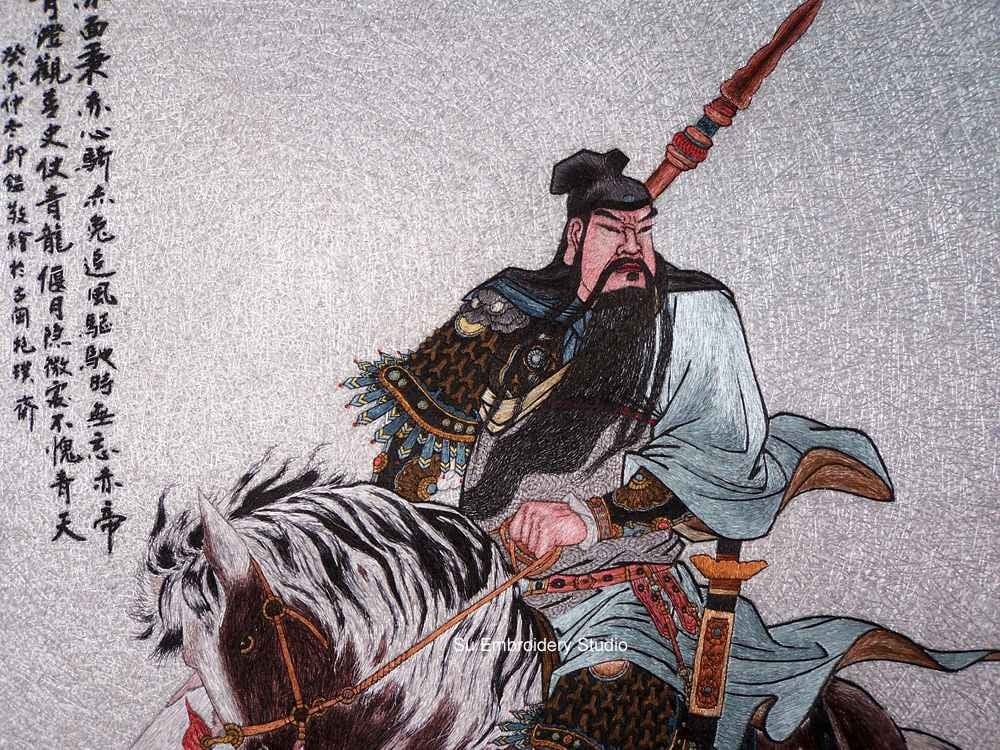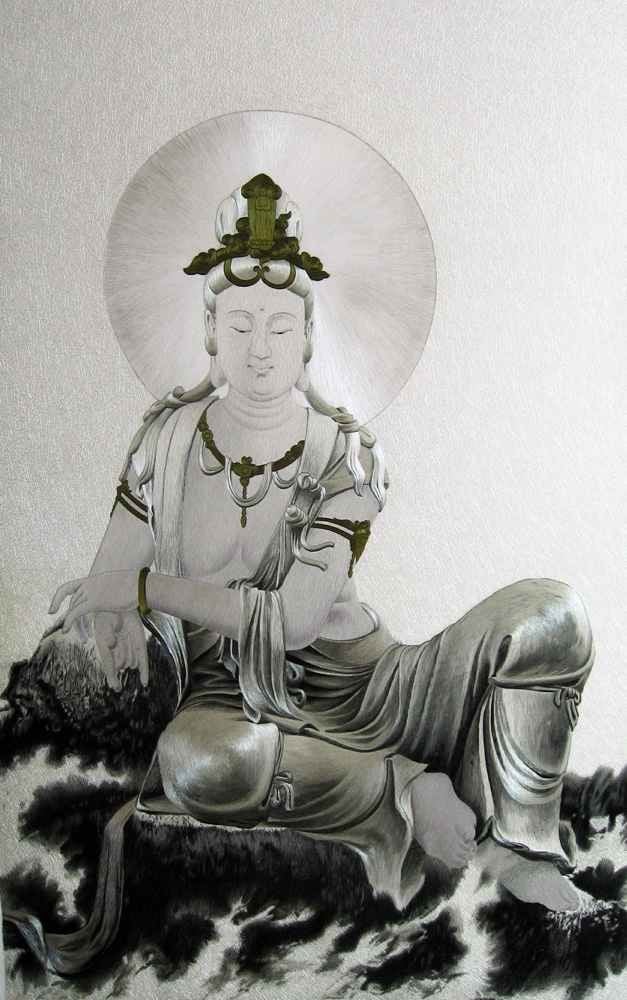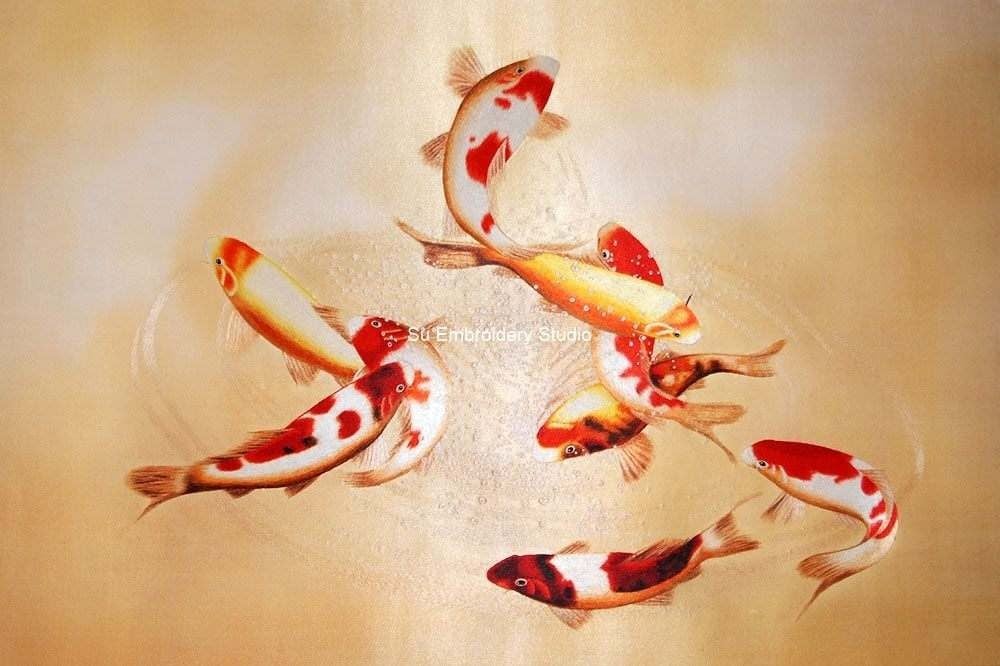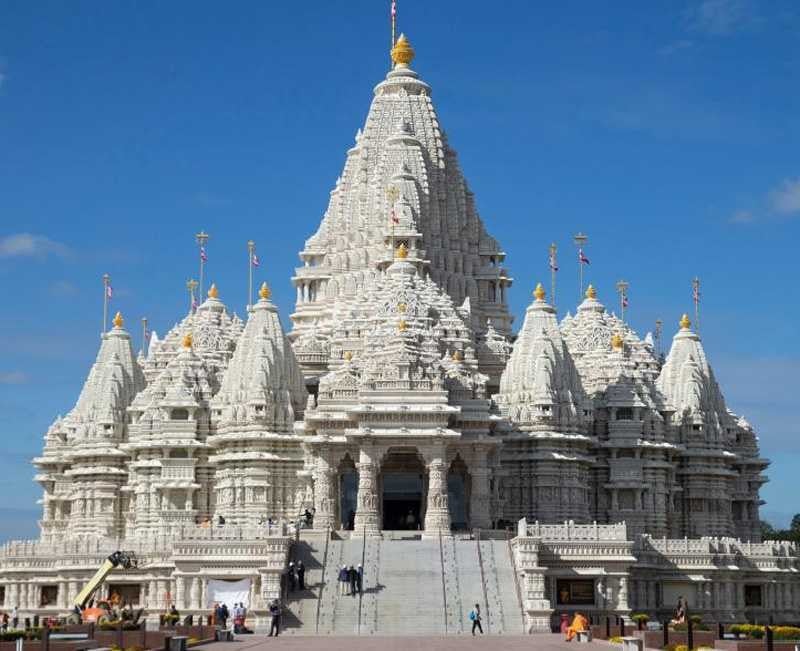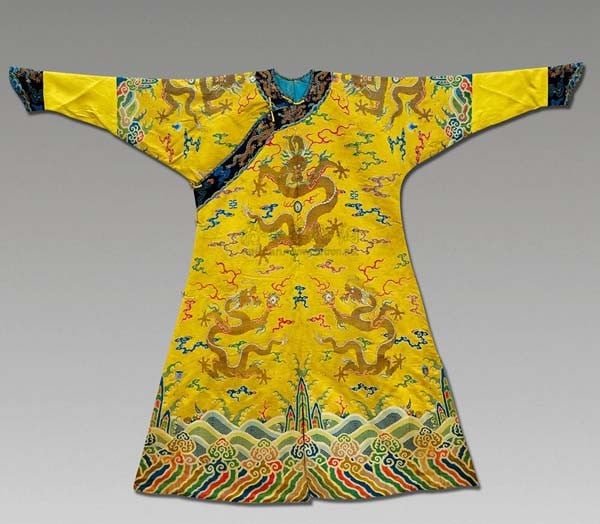
Chinese silk embroidery is a distinguished hand embroidery form practiced in China, renowned for its meticulous craftsmanship and cultural significance. As one of the various hand embroidery forms in China, silk embroidery stands out for its intricate designs and patterns created on silk fabric using silk threads. This ancient art form has a rich history spanning thousands of years and holds a prominent place in Chinese culture and artistry. Skilled artisans meticulously handcraft each piece, employing a diverse array of stitching techniques and motifs inspired by nature, mythology, and historical narratives.
Chinese silk embroidery holds a unique and significant place in both Chinese culture and art, distinguishing itself from other forms of hand embroidery practiced around the world. While hand embroidery is practiced in many countries, including India, Japan, Turkey, and France, Chinese silk embroidery stands out for its exceptional craftsmanship, intricate designs, and rich cultural heritage.
In India, for example, traditional hand embroidery forms such as Kantha, Chikankari, and Zardosi are highly regarded for their intricate patterns and exquisite detailing. These embroidery styles have been passed down through generations and continue to be cherished as symbols of Indian craftsmanship and cultural identity. Similarly, Japan is known for its intricate embroidery techniques such as Sashiko and Kogin, which have been used for centuries to embellish clothing and textiles with geometric patterns and motifs inspired by nature.
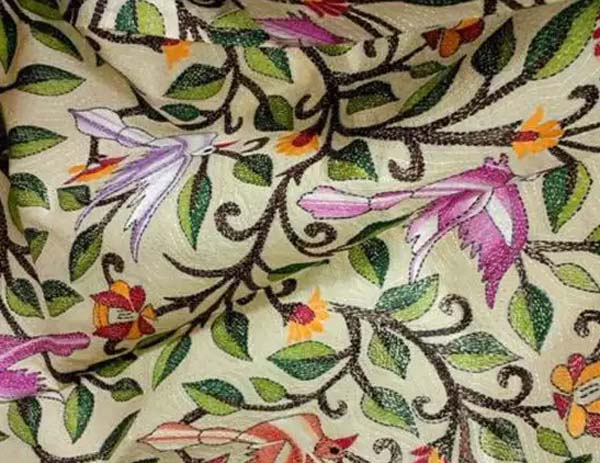
Indian Kantha Embroidery
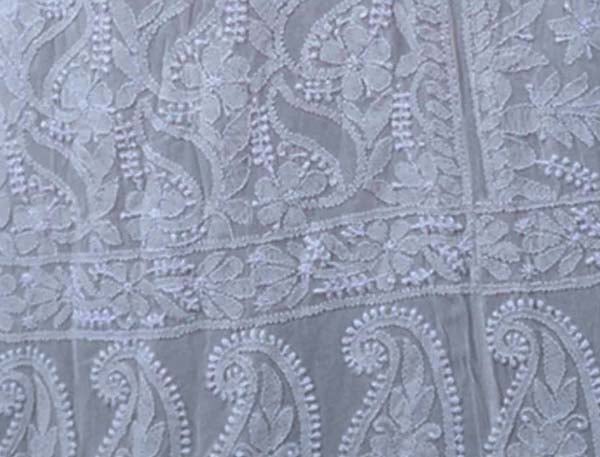
Indian Chikankari Embroidery
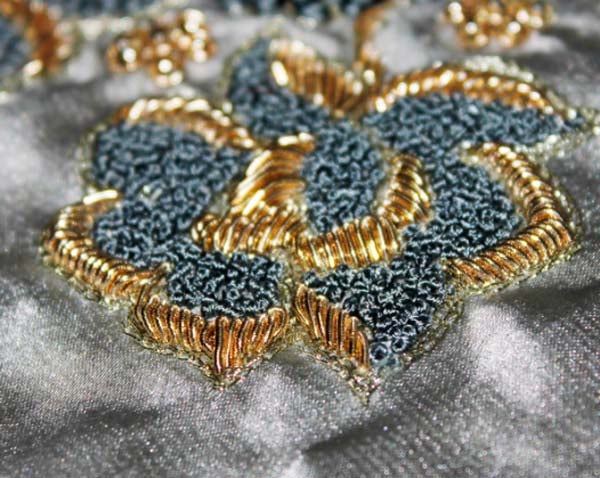
Indian Zardosi Embroidery
In Turkey, the art of hand embroidery, particularly Turkish needle lace (oya) and traditional Ottoman embroidery (tezhip), reflects the country's rich cultural heritage and artistic traditions. These embroidery styles, characterized by their elaborate designs and vibrant colors, have been preserved and revitalized by skilled artisans and cultural enthusiasts.
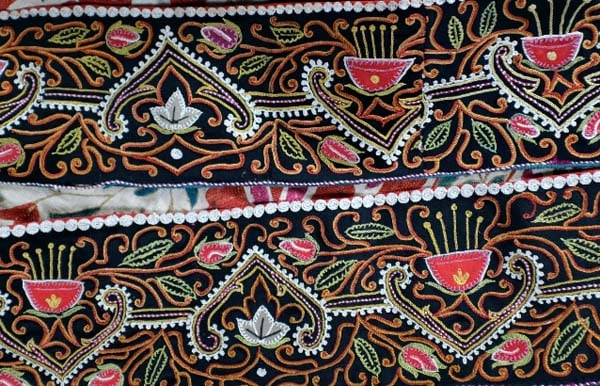
Turkish Traditional Ottoman Embroidery
In France, the art of embroidery has a long and storied history, with renowned embroidery houses such as Lesage and Luneville producing exquisite hand-stitched creations for haute couture fashion houses and luxury brands. French embroidery techniques, including tambour, beading, and stumpwork, are celebrated for their precision, elegance, and attention to detail.
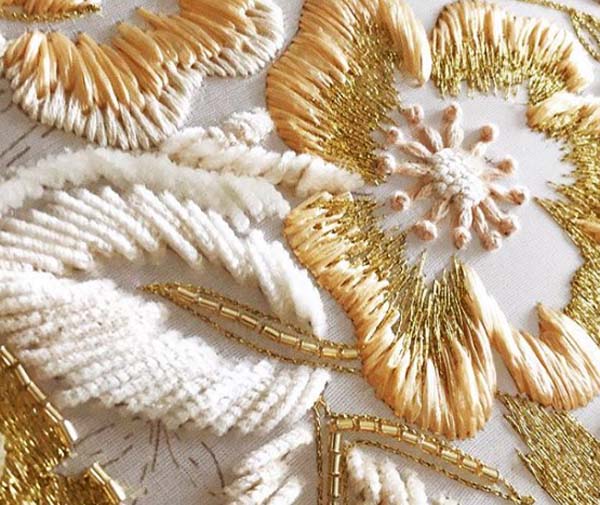
French Luneville Embroidery
Despite the continued practice of hand embroidery in these countries, Chinese silk embroidery remains unrivaled in its complexity, technical sophistication, and cultural significance. With its centuries-old tradition, diverse repertoire of stitches, and rich symbolism, Chinese silk embroidery continues to captivate audiences worldwide and inspire admiration for its unparalleled artistry and craftsmanship.
In this article we will delve into the factors that contribute to the prominence and importance of Chinese silk embroidery in Chinese art and culture.
1.Rich Cultural Heritage:
Chinese silk embroidery has a long and illustrious history, dating back thousands of years. Its origins can be traced to ancient China, where silk embroidery was not only a form of artistic expression but also a symbol of wealth, status, and cultural refinement. Over the centuries, Chinese silk embroidery has been deeply intertwined with the country's cultural and social fabric, evolving in tandem with dynastic changes, regional customs, and folk beliefs.
Throughout China's history, silk embroidery has played a prominent role in various aspects of life, from ceremonial rituals and court attire to everyday garments and decorative items. The techniques and motifs employed in Chinese silk embroidery have been passed down through generations, each era leaving its unique imprint on the art form. From the intricate designs of the Han Dynasty to the vibrant colors and auspicious symbols of the Qing Dynasty, Chinese silk embroidery reflects the diverse cultural influences and artistic sensibilities of its time.
Moreover, Chinese silk embroidery serves as a tangible link to China's rich cultural heritage, preserving ancient traditions and craftsmanship for future generations. Many of the motifs and symbols found in Chinese silk embroidery carry deep cultural and spiritual significance, representing themes such as longevity, prosperity, happiness, and good fortune. These motifs are often inspired by nature, mythology, literature, and religious beliefs, reflecting the interconnectedness of Chinese society and its reverence for the natural world.
As such, Chinese silk embroidery not only showcases the technical skill and artistic prowess of its creators but also serves as a repository of cultural knowledge and historical narratives. It embodies centuries of artistic evolution and innovation, offering valuable insights into China's artistic heritage and cultural identity. In today's rapidly changing world, Chinese silk embroidery remains a cherished art form, cherished for its beauty, symbolism, and profound connection to China's rich cultural legacy.
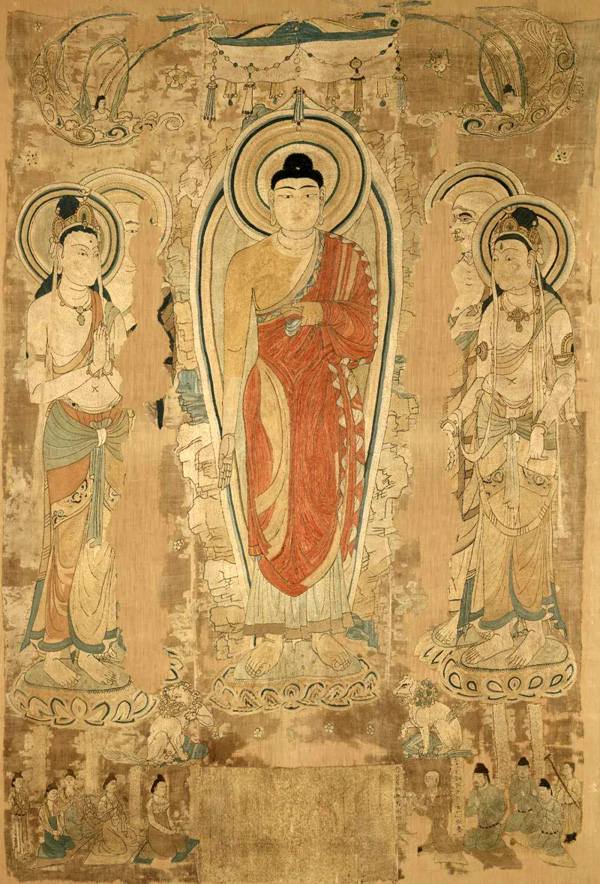
Silk Embroidered Painting of Siddhartha Gautama Preaching in the Tang Dynasty (from 618 to 907), Discovered in Dunhuang Cave of Sutras, Kept in British Museum Now
2. Mastery of Technique:
Chinese silk embroidery is renowned for its exquisite craftsmanship and technical mastery, setting it apart as a revered art form cherished both within China and internationally. Artisans meticulously handcraft each piece using fine silk threads, a tradition passed down through generations, where intricate patterns, textures, and designs are meticulously brought to life. The level of skill and precision required to produce high-quality silk embroidery is unparalleled, with artisans dedicating years to mastering the various stitches and techniques involved.
Chinese silk embroidery encompasses a wide range of stitching methods, each requiring a distinct set of skills and expertise. From the delicate satin stitch to the intricate seed stitch, artisans employ a repertoire of techniques to achieve different effects and textures, adding depth and dimension to their creations. Additionally, specialized techniques such as thread painting, shading, and layering are used to create lifelike images and intricate details, showcasing the virtuosity of the artisans' craftsmanship.
Furthermore, Chinese silk embroidery often incorporates elements of other art forms, such as painting and calligraphy, further enriching its aesthetic appeal and complexity. By seamlessly blending different artistic disciplines, artisans are able to create pieces that transcend traditional boundaries, captivating viewers with their beauty and ingenuity.
Moreover, the mastery of technique in Chinese silk embroidery extends beyond mere technical proficiency to encompass a deep understanding of design principles, color theory, and composition. Artisans carefully consider every aspect of their work, from the choice of materials and colors to the arrangement of motifs and patterns, ensuring harmony and balance in the final piece.
In essence, Chinese silk embroidery represents the artistic achievement in a special form, where technical skill, creativity, and cultural heritage converge to create timeless masterpieces. It is a testament to the dedication and passion of generations of artisans who have devoted their lives to preserving this ancient art form and pushing its boundaries to new heights.
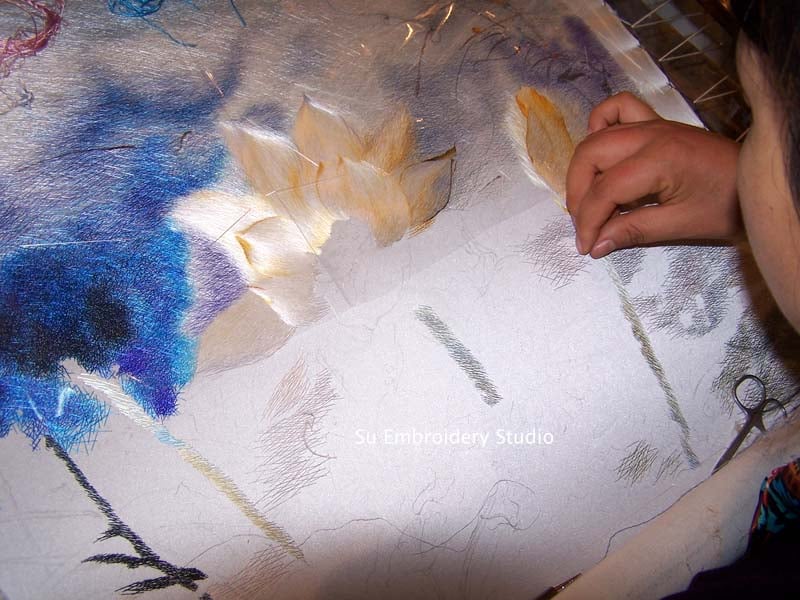
Chinese Silk Embroidery 'Lotus Flower' Hand Embroidered with Criss-Cross Stitches in the Background and Plain Stiches for the Lotus Flower Petals
3. Symbolism and Meaning:
Chinese silk embroidery is a treasure trove of symbolism and meaning, weaving together centuries-old traditions, myths, and beliefs into intricate designs that transcend mere aesthetics. Unlike other forms of hand embroidery, Chinese silk embroidery is laden with layers of significance, with each motif carefully chosen to convey specific cultural messages and values.
At the heart of Chinese silk embroidery lies a rich tapestry of auspicious motifs, legendary figures, and scenes from nature and mythology. These motifs are deeply rooted in Chinese folklore, history, and philosophy, reflecting the country's diverse cultural heritage and spiritual beliefs. From the majestic dragon symbolizing power and good fortune to the graceful phoenix representing rebirth and prosperity, each motif carries its own unique symbolism, imbuing every piece of silk embroidery with layers of meaning and significance.
Moreover, Chinese silk embroidery serves as a visual language, with each stitch and thread telling a story that spans generations. Through intricate designs and vibrant colors, artisans convey messages of prosperity, longevity, happiness, and harmony, fostering a sense of cultural identity and belonging. Whether depicting scenes from traditional folk tales, historical events, or everyday life, silk embroidery serves as a powerful medium for cultural transmission, preserving ancient traditions and values for future generations.
Furthermore, silk embroidery is often used to commemorate significant life events and milestones, such as weddings, birthdays, and festivals. By incorporating auspicious motifs and symbols into their designs, artisans infuse these occasions with blessings and well-wishes, creating lasting memories and connections between individuals and their cultural heritage.
In essence, Chinese silk embroidery transcends mere decoration to become a profound expression of cultural identity, spirituality, and collective memory. With its rich symbolism and deep meaning, silk embroideries serve as a timeless testament to the enduring legacy of Chinese culture and artistry, enriching the lives of those who create it and those who behold its beauty.
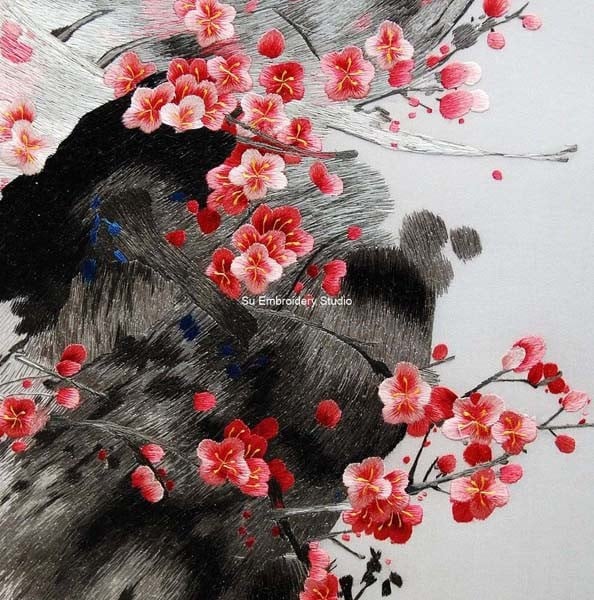
Chinese Silk Embroidery 'Plum Blossoms' which Stand for Perseverance. For more information, please read The "Four Gentlemen" in Chinese Silk Embroidery.
4. Royal Patronage and Imperial Favor:
Throughout China's illustrious history, silk embroidery has basked in the glow of royal patronage and imperial favor, weaving its way into the very fabric of dynastic splendor. From the opulent courts of ancient emperors to the majestic halls of imperial palaces, silk embroidery adorned the garments, tapestries, and artworks that adorned these hallowed spaces, serving as a symbol of prestige and power.
Emperors and aristocrats alike recognized the unparalleled beauty and craftsmanship of silk embroidery, commissioning master artisans to create elaborate garments fit for royalty and tapestries that captured the essence of imperial grandeur. Each stitch was imbued with significance, reflecting the dynastic aspirations and cultural ideals of the ruling elite.
The association of silk embroidery with imperial splendor elevated its status to new heights, cementing its place as a cherished art form and cultural treasure. As a result, silk embroidery became synonymous with luxury, refinement, and sophistication, with only the most skilled artisans granted the honor of creating pieces for the imperial court.
Moreover, the patronage of emperors and aristocrats provided a platform for artistic innovation and experimentation, fueling the development of new techniques, styles, and motifs in silk embroidery. Artisans were encouraged to push the boundaries of their craft, producing ever more intricate and exquisite works of art that dazzled the senses and captured the imagination.
In essence, royal patronage and imperial favor bestowed upon silk embroidery not only elevated its status but also enriched its artistic legacy, ensuring its enduring significance in Chinese art and culture. Today, the echoes of this illustrious past can still be felt in the exquisite beauty and craftsmanship of Chinese silk embroidery, a timeless testament to the power of artistic expression and the enduring allure of imperial splendor.

Ancient Chinese Emperor's Dragon Robe with Exquisite Silk Hand Embroidery Work
5. Continuing Tradition:
Despite the relentless march of time and the winds of change brought by modernization, Chinese silk embroidery stands as an indomitable bastion of tradition and heritage, steadfastly rooted in the rich soil of Chinese society. Across the vast expanse of China's landscape, from bustling metropolises to serene rural villages, skilled artisans and dedicated embroidery studios labor tirelessly to uphold and perpetuate this ancient craft, ensuring its survival and relevance in the contemporary world.
With each meticulously crafted stitch, these modern-day custodians of tradition pay homage to the centuries-old legacy of Chinese silk embroidery, passing down age-old techniques and time-honored methods from one generation to the next. Their unwavering dedication and unwavering commitment serve as a beacon of hope for the preservation of China's cultural heritage, safeguarding this cherished art form for future generations to cherish and admire.
Nowadays, Chinese silk embroidery finds expression in a myriad of forms and contexts, from ceremonial garments and religious artifacts to decorative items and contemporary art pieces. Its influence extends far and wide, shaping the cultural landscape of China and leaving an indelible mark on the hearts and minds of its people.
Hand Embroidered Butterflies on Silk Fabric, Custom EmbroideryOrdered by Fashion Designer in the UK

Silk Embroidered Dresses at London Fashion Week 2014, Custom Silk Embroidery Provided by Su Embroidery Studio
Hyper realistic silk Embroideries created by embroidery artists from Su Embroidery Studio whose aim is to make the finest hand embroidery in the world with silk threads.
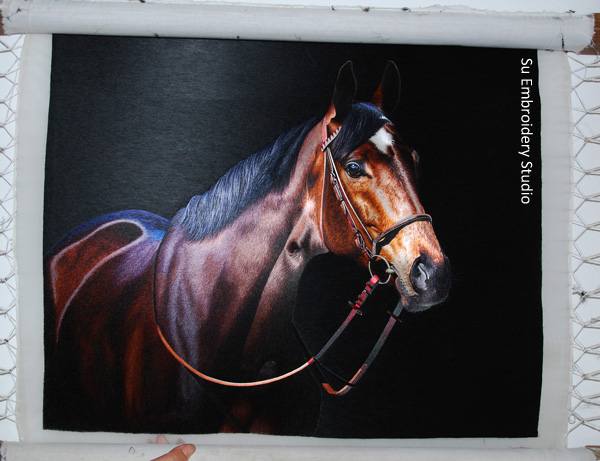
Masterpiece Silk Embroidery ‘Treve’, French Thoroughbred Racehorse, the 2013 European Horse of the Year

Masterpiece Silk Embroidery ‘Colnago V3RS’, Tadej Pogačar's Tour de France Winning Machine, 2020
Each of these two silk embroideries took close to one year to complete. The completed silk embroideries are comparable to photographs in realism. Su Embroidery Studio will be happy to share some closeup photos with any silk embroidery lovers who would love to see the minute details of the embroidery work. Please feel free to contact us for more information about Su Embroidery Studio's hyper realistic silk embroideries and our custom hand embroidiery services.
In conclusion, Chinese silk embroidery's importance in art and culture is multifaceted, encompassing its rich cultural heritage, technical mastery, symbolic significance, historical patronage, and ongoing tradition. It is a testament to China's artistic legacy and cultural identity, transcending time and space to captivate hearts and minds around the world. As such, Chinese silk embroidery continues to enchant and inspire, serving as a timeless symbol of beauty, craftsmanship, and cultural heritage.
by Su Embroidery Studio (SES), Suzhou China
SES is dedicated to Chinese Silk Embroidery Art and High-End Custom Embroidery
Find SES's embroidery work at Chinese Silk Embroidery for Sale.









